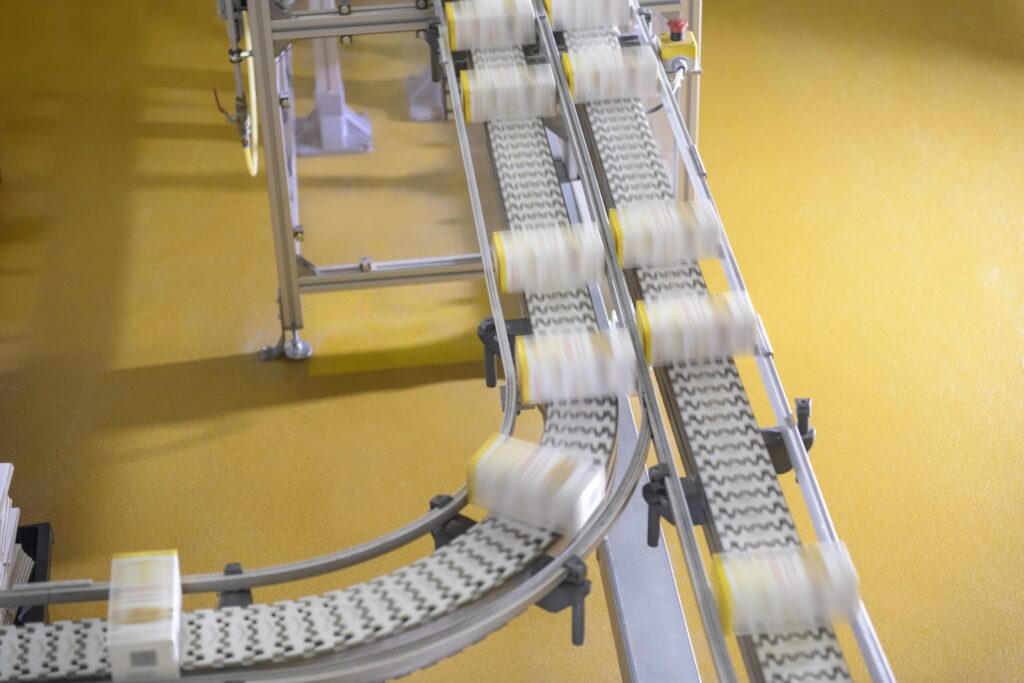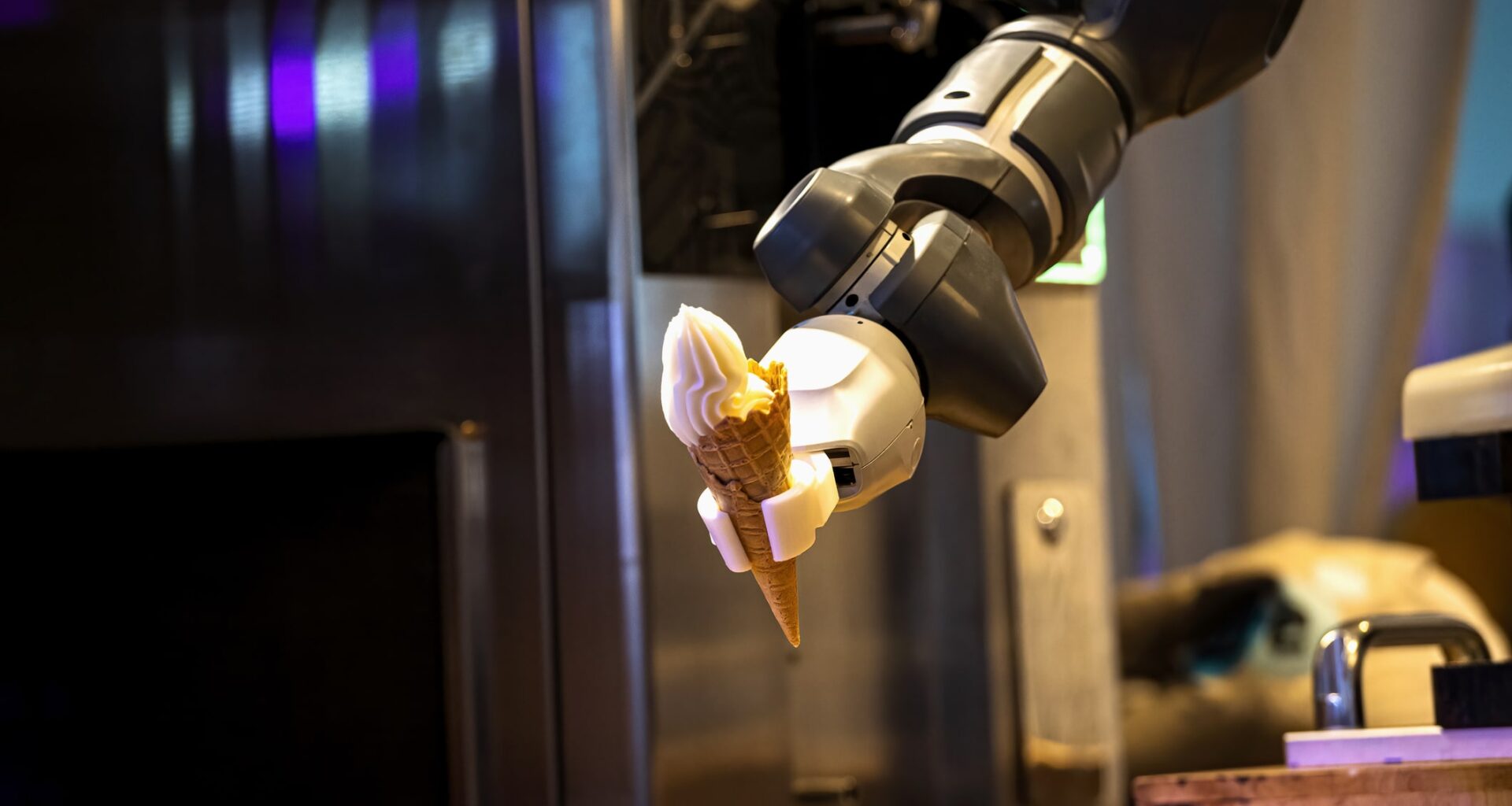The use of robotics in the food industry appears to be a growing trend with efficiencies improved and labour costs minimised. Typically, the industry has been slow to adopt new technologies but with growing, ageing populations on the rise, the demand for quick, clean, and high-quality food is increasing and so many are turning to technology to meet this demand.
Throughout food production, robots are being used in agriculture, food processing, packing, delivery, and even hospitality to get efficient results and provide customer satisfaction.
Are There Agricultural Robots?

Agriculture often conjures up idyllic pastoral scenes in the mind’s eye. However, modern farming goes well beyond the quaint imagery of big red tractors and happy farmyard animals. In a globalised and industrialised world, our food production must keep pace, so labour-intensive farming for growing populations with growing demands just isn’t viable anymore.
With many parts of Western Europe relying on immigrant labour to perform these tasks, it could be argued that automation is a more cost-effective approach that is less likely to be affected by the volatility of labour markets.
As with any modern industry, automation is key. From planting, weeding, and harvesting to robotic milkers and litter scarification there are more and more technologies to minimise the use of human labour.
Agricultural harvesting robots are specifically engineered for the task of gathering crops like fruits and vegetables. Equipped with sensors and cameras, they’re adept at identifying the optimal moment for harvesting. Utilising robotic arms or similar tools, they delicately collect the produce, ensuring minimal damage. The picking process is commonly handled by six-axis robots, which, being stationary, are frequently coupled with a mobile component. This mobile unit may take the form of either a mobile robot or a robotic transport unit (RTU).
Seeding and weeding robots may be similar in design with targeted sensors able to identify unwanted growth or the ideal area, depth, and soil for planting. An arm then removes the weed or plants the given seed. Automated drones can also be used for spraying crops, using an aerial view to spot where they can be used most effectively.
The Netherlands seems to be a particular leader in Europe in this area, which is perhaps no surprise with their pioneering use of vertical farming where crops are grown in stacked layers to maximise space. A report on Robotic and Automation Companies in the Netherlands, from 2023, farming robotics has emerged as a rapidly burgeoning field of interest for automation companies in the Netherlands. According to the report, there has been a twofold increase over the past 12 years, with 74 businesses now specialising in agricultural and forestry solutions.
Why Are Robots Becoming Popular in Food Processing?
Food processing is another area where automation is growing. Figures from the British Automation and Robot Association suggest that individual robots sold to domestic food and drinks producers jumped by 35% from 2019 to 2020 and then further increased by another 21% in 2021.
Robots can be used in areas where conditions aren’t optimal for human resources and to minimise the likelihood of contamination. For example, when cutting, processing, and deboning meat, conditions must be kept chilled, so human labour is not ideal. Robots that perform such tasks are not affected by the cold and can be easily kept sanitary.
Within dairy production, this means areas like the constant stirring of curds or slicing cheese can be performed via automation with the added incentive of increasing consistency. This is especially prescient given that, in January 2018, a study conducted by the Association of Labour Providers revealed that 70% of food and beverage manufacturing firms were grappling with a deficiency in low and unskilled labour.
Even from the very start of the process, automatic milking robots can be employed to mass milk cows at one time whilst also monitoring their health and quality of the milk.
Automated Food Packaging Systems

Secondary packaging (or tertiary packaging) and palletising already largely use robots across the sector, where individual packages are grouped in a larger container and then these packages are stacked for shipping by palletising robots. 94% of food packaging operators are using robotics already, according to a survey by the Association for Packaging and Processing Technologies. However, there is still plenty of scope for them to be used in primary packaging.
For uniformity, robots can pick and place items with greater care and efficiency than human labour. With the development of grip and vacuum technology, delicate items can be easily arranged and packaged without less likelihood of error from human hands, minimising mistakes, and stoppages so they can work on predetermined programmes and schedules without interruption.
Robots in Food Cooking and Service
Traditionally, the intricate nature of cooking meals has required the human touch but with greater robotic capabilities, robots are even finding their way into hospitality. With the precision of making specialty coffee, robots have been developed to be able to create and pour the perfect cup of coffee, whilst simpler tasks in meal prep, such as flipping burgers or cracking eggs, have also been automated. They can monitor the food and adjust temperatures or flip items as needed. These robots are crafted for utilisation in restaurants and hotels featuring chef automation. Additionally, efforts have commenced for the development of cooking robots tailored for home use.
The Future of Robotics in Food Production
The realm of robotics and automation within the food industry is undoubtedly an area of significant interest, with its growth showing no signs of slowing down. These technologies are steadily enhancing the efficiency of the entire manufacturing process, and with the constant improvements of AI and Big Data, this only serves to further strengthen this sector.











